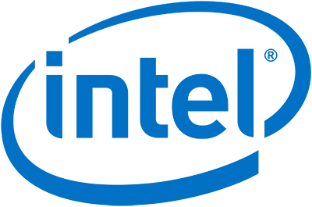Back to Industry Program Page >>
Tuesday, 10 December 2019
10:30-12:30
Industry Demo 1: Adaptive Frequency Control based Energy Savings & Memory Resiliency with Closed Loop Automation
15:30-17:30
Industry Demo 2: Achieving Determistic Communications with Wi-Fi
Wednesday, 11 December 2019
10:30-12:30
Industry Demo 3: Enabling CSI-based Motion Detection in Existing Wi-Fi Networks
15:30-17:30
Industry Demo 4: Video Streaming with the First-ever NOMA over Wi-Fi Prototype
Thursday, 12 December 2019
10:30-12:30
Industry Demo 5: Linearization of National Instruments Vector Signal Transceiver for Receive and Transmit
Industry Demo 1: Adaptive Frequency Control based Energy Savings & Memory Resiliency with Closed Loop Automation
Date/Time: 10 December 2019, Tuesday: 10:30-12:30
Room: Kona Promenades
Authors:
- Sunku Ranganath, Network Software Engineer, Intel Corporation, Portland OR, USA
- John Browne, Software Architect, Intel Corporation, Shannon, Ireland
- Patrick Kutch, Solutions Architect, Intel Corporation, Portland OR, USA
- Krzysztof Kepka, Network Software Engineer, Intel Corporation, Gdansk, Poland
Abstract: Communications Service Providers and operators have an impending need to evolve the infrastructure to be operated in an autonomous fashion to prepare for the onslaught of data processing needs across core, edge, visual cloud, etc. with 5G network slicing. It’s increasingly difficult to consider isolated information from applications or infrastructure or streaming telemetry without correlating or providing the context based service assurance for each of the network slices. While most of the closed loops tend to focus on overall NFVO based offline processing, the demonstrations in this proposal focus on real-time and near real-time closed loops to show policy based dynamic provisioning of platform hardware resources across the network slices using the VIM layer inter-working with a monitoring and alerting system and platform collection agent collectd forming a closed loop. Real time closed loop infrastructure require unique approach to software stack as they are often sensitive to time. Closed loop automation aims bring together various aspects of telemetry, monitoring, analytics, correlation, traffic measurement, etc., across the ETSI NFV layers and truly lay the path towards zero touch operations. The demonstrations detailed in this proposal showcase real-time closed loops in Kubernetes environment with Data Plane Development Kit (DPDK) based applications that (1) adapt to hardware reliability errors demonstrating resiliency and (2) provide power savings by scaling CPU core frequencies based on packets processed with a Machine Learning (ML) algorithm. The demos show telemetry generated by the platform, which is then correlated, used to generate alerts, generate policy decisions which are then used to provision platform resources in a real-time control loop.
Industry Demo 2: Achieving Determistic Communications with Wi-Fi
Date/Time: 10 December 2019, Tuesday: 15:30-17:30
Room: Kona Promenades
Authors:
- Juan Fang, Javier Perez-Ramirez, Mikhail Galeev, Mohammad Mamunur Rashid, Susruth Sudhakaran, Marcin Spoczynski, Dave Cavalcanti Intel Corporation, Hillsboro OR
Abstract: Emerging applications such as flexible manufacturing (Industry 4.0), autonomous systems and immersive experiences require accurate time synchronization and deterministic (low) latency compute and communications with high reliability. The benefits of enabling deterministic communication over wireless, and over Wi-Fi, in particular, are significant, including reduced wiring/maintenance costs, flexibility of deployment, and mobility. However, it is a challenging research problem to achieve determinism over an intrinsically random wireless channel, especially in unlicensed bands.
Given the typical consumer experience with Wi-Fi (e.g. in homes, hot spots, etc.), the idea of applying Wi-Fi to a time-critical applica- tion (e.g. an industrial control system) is often met with skepticism to say the least. However, extensions of the IEEE 802.1 Time Sensitive Networking (TSN) capabilities to 802.11, such as time synchroniza- tion and time-aware (802.1Qbv) scheduling have been shown to enable time-critical applications under controlled/managed network conditions . Low latency Wi-Fi solution demonstrated before was able to deliver single-digit millisecond latency with reasonable performance. This new demonstration focus on the next step of the Wi-Fi based Wireless TSN solution, which is the capability to achieve robust and low latency performance with high degree of determinism even under presence of interference generated by unmanaged/rogue devices. The novel technologies demonstrated include:
- Time-critical network adaptation through frequency/space diversity and the extension of 802.1CB redundancy mecha- nisms to 802.11
- The capability to detect and localize interference using multi-mode sensing capabilities in real-time
Industry Demo 3: Enabling CSI-based Motion Detection in Existing Wi-Fi Networks
Date/Time: 11 December 2019, Wednesday: 10:30-12:30
Room: Kona Promenades
Authors:
- Atiye MalekSadati, Abhishek Agrawal and Debashis Dash ON Semiconductors, San Jose, CA
Abstract: This demo aims to show motion detection capabilities of a commodity Wi-Fi setup by monitoring channel state information (CSI) of a static link, while the network is used for regular data transmission. Enabling CSI extraction capability on existing Wi-Fi networks can lead to ease of experimentation and developing advanced techniques for motion detection and behavior recognition.
Industry Demo 4: Video Streaming with the First-ever NOMA over Wi-Fi Prototype
Date/Time: 11 December 2019, Wednesday: 15:30-17:30
Room: Kona Promenades
Authors:
- Evgeny Khorov, Alexey Kureev and Ilya Levitsky (IITP RAS)
Abstract: Nowadays, wireless networks are becoming increasingly crowded with a massive number of various devices of different generations. A promising way to improve spectral efficiency and user experience in a scenario with a large number of clients associated with the same AP is related to non-orthogonal multiple access (NOMA). NOMA allows several data flows to be transmitted in parallel to/from several users at the same time and frequency. As a result, NOMA increases the possible number of devices serviced together and reduces latency. In this demo, we present the first-ever prototype of Downlink NOMA in Wi-Fi. The prototype implements Power-Domain NOMA with Symmetric Coding (NOMA-SC).
The basic idea behind NOMA is as follows. Consider two devices experiencing dissimilar channel gain. In this situation, the AP can serve both devices at the same time and frequency band by splitting the TX power between them: a greater part of the power is dedicated to a device with worse channel conditions, a smaller part is dedicated to a device with better channel conditions. Adjusting the power split in a correct way allows both destinations to receive and decode their own frames. The device with the better channel may perform Successive Interference Cancellation to separate its data from the mixture of two signals. At the same time, the device with worse channel conditions decodes the stronger signal, perceiving the weak one as unknown noise. Thus, this device does not need to use SIC.
NOMA-SC is a variation of conventional NOMA, with the following features. First, NOMA-SC combats Error Propagation by using a modified modulation, which results in better frame receive ratio for the device with better channel conditions. Second, instead of regular SIC, NOMA-SC uses another approach, which lowers the computational complexity of the receiver and decreases signal processing time. Nevertheless, we succeeded in designing NOMA-SC over Wi-Fi without modification of existing frame formats and without any impact on the device receiving the stronger signal.
To prove the concept of NOMA Wi-Fi, we have developed a testbed based on software-defined radio. The testbed shows the performance of the described NOMA Wi-Fi in a scenario when an access point streams two videos to various users. while NOMA-SC provides streaming of very high quality, without NOMA, the videos are significantly damaged. Our approach is fully backward compatible and allows a NOMA AP to transmit data simultaneously to two client devices: the first one supports NOMA, the second can be legacy. Specifically, in our testbed, we use an off-the-shelf laptop as the second receiver.
Industry Demo 5: Linearization of National Instruments Vector Signal Transceiver for Receive and Transmit
Date/Time: 12 December 2019, Thursday: 10:30-12:30
Room: Kona Promenades
Authors:
- Dr. Scott R. Velazquez, President, Innovation Digital LLC
- Dr. Yujia Wang, Chief Technologist, Innovation Digital LLC
Abstract: This industry demonstration will show the performance of several powerful digital signal processing algorithms by Innovation Digital, LLC for improving the linearity, dynamic range, and resolution of the National Instruments PXIe-5840 Vector Signal Transceiver (or similar) for both receive and transmit modes of operation.
Innovation Digital’s patented Linearity Error Compensation (LinComp®) digital signal processing technology for dramatic reduction in harmonic and intermodulation distortion (e.g., 24 dB) in analog-to- digital converters, digital-to-analog converters, low noise amplifiers, mixers, or a combination of devices in an RF chain. The technology provides critical dynamic range improvement for applications such as test equipment, communications (e.g., 5G), SIGINT receivers, RADAR, and RF Communications. Similarly, Innovation Digital’s patented Adaptive Linearization (ALINTM) for high power RF amplifiers uses unique and highly effective digital predistortion (DPD) algorithms to provide RF power amplifiers with significant improvement in its linear performance thereby increasing its effective efficiency and eliminating the need to use substantial back-off. Typically a 25 dB improvement in linearity can be obtained over instantaneous bandwidths exceeding 1 GHz.
The signal processing can be efficiently incorporated into realtime FPGA operation, software (e.g., LabVIEW) processing, or a combination of both.
The processing will be demonstrated on the National Instruments PXIe-5840 Vector Signal Transceiver (or similar) in the LabVIEW environment using a multitude of waveforms for different applications, showing the raw (before) and compensated (after) performance for both transmit and receive.






















